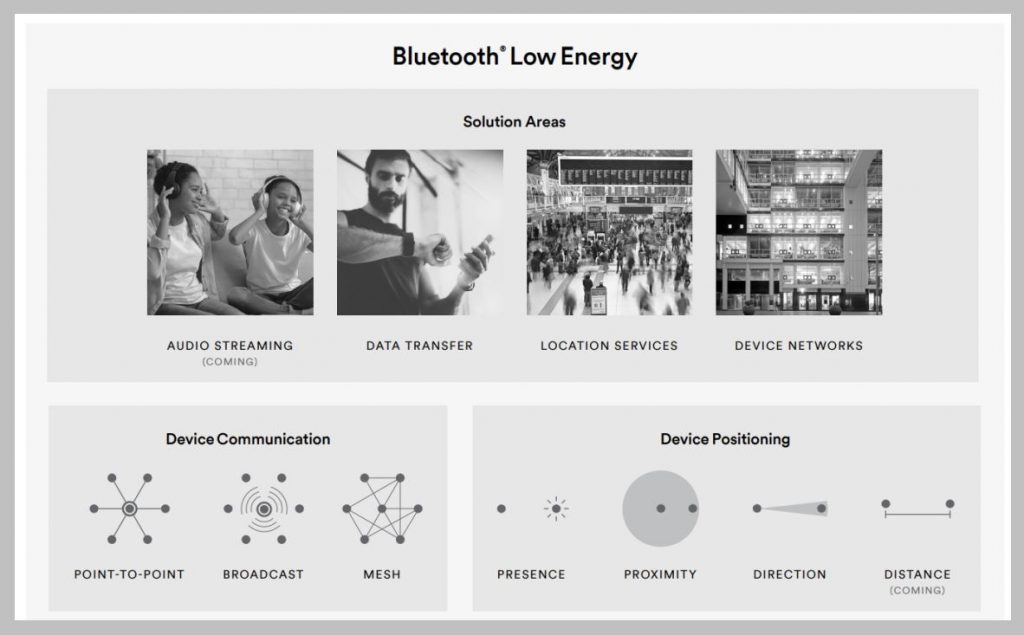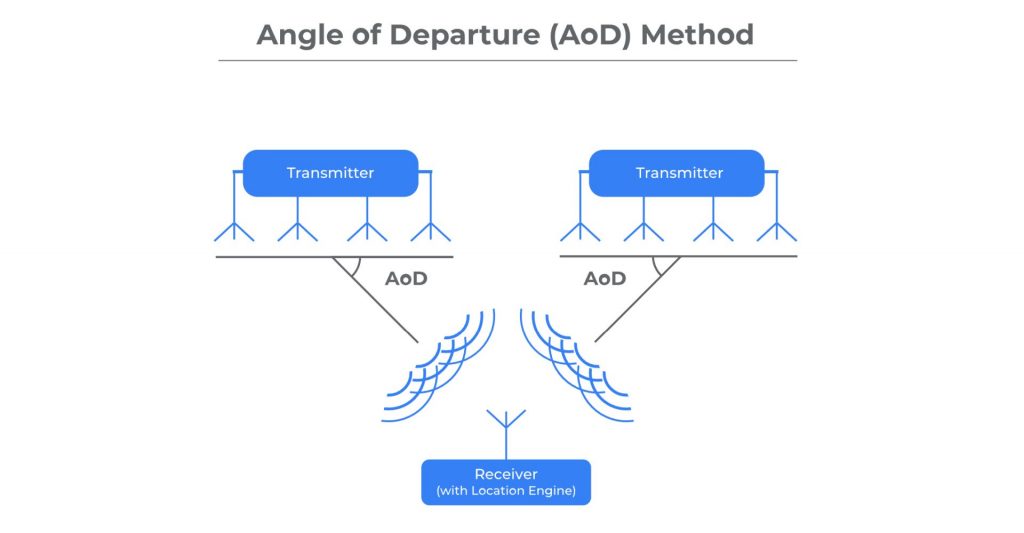Last Updated on May 31, 2022 by saba
Billions of consumer electronics equipment ranging from smartphones and laptops to earphones and smart home devices feature Bluetooth technology. In all probability, the device you are reading this on also has Bluetooth capability. You probably know that it has something to do with wireless communication, but then so does Wi-Fi.
So, what exactly is Bluetooth and why does it exist when we also have Wi-Fi?
Subscribe to Onsitego
Get the latest technology news, reviews, and opinions on tech products right into your inboxLet’s take a dive into the world of the Bluetooth wireless communication standard and figure out what has allowed it to thrive in a world dominated by Wi-Fi. But more importantly, we will also chart the exciting new possibilities opened up by the burgeoning Bluetooth LE (Low Energy) protocol and how it promises to improve smart home infrastructure.
What Is Bluetooth?
Bluetooth allows personal electronics devices such as smartphones, tablets, and laptops to wirelessly communicate with each other. It also offers wireless connectivity with peripherals such as keyboards, mice, headphones, and speakers. Apart from its core purpose of eliminating wires between desktop and portable devices, Bluetooth also enables file transfers between devices over short distances—preferably in the same room or in closer proximity.

Much of Bluetooth’s success is attributed to it being a cohesive communications standard instead of a proprietary technology. However, it almost ended up fragmenting into proprietary offerings that would’ve been eventually forgotten. In the mid ‘90s, Ericsson, Nokia, and Intel were separately working on proprietary wireless technologies to connect the then-emerging portable devices, such as mobile phones and laptops.
Fortunately, they had the good sense to pool their resources into developing an inter-compatible short-range wireless communication platform under the Bluetooth banner. The protocol was initially standardised by IEEE (Institute of Electrical and Electronics Engineers) as the 802.15.1 protocol. That’s the same IEEE that maintains the Wi-Fi standard.
While IEEE bowed out to concentrate on maintaining the Wi-Fi protocol, the task of developing and shepherding the Bluetooth standard was taken up by the Bluetooth Special Interest Group (SIG). This now includes more than 35,000 member companies spread across consumer electronics, telecommunication, and networking domains. That explains why it is almost impossible to find a modern consumer electronics product without Bluetooth connectivity.
How Does Bluetooth Work?
Bluetooth works in a similar manner to Wi-Fi (read more about that here) by converting data into radio frequency waves in the 2.4GHz spectrum. But unlike Wi-Fi, which has a range of 50 metres indoors and twice as much outdoors, Bluetooth is more concerned with keeping transmission power low to conserve battery life and avoid radio interference with neighbouring devices. That’s primarily because it operates on the principle of creating a personal area network (PAN), otherwise also known as the piconet.

A typical consumer-grade Bluetooth device has a minimum range of 10 metres, with the total transmission power rated under 2.5 milliwatts. This allows tiny peripherals such as wireless earbuds and mice to operate wirelessly without draining their limited battery reserves. The simple ad hoc (peer-to-peer) nature of a Bluetooth connection also reduces the electronic complexity and therefore the cost of implementing it, which makes it perfect for connecting devices to inexpensive peripherals such as headsets and input devices.
Although the widely found Class 2 Bluetooth devices operate at a range of 10 metres and up, Class 3 Bluetooth radios are restricted to a maximum range of a single metre for mostly wearable applications. However, such Class 3 devices are extremely rare at the moment. Interestingly, while the Bluetooth specification mandates a range of 10 metres and up for Class 2 devices, the Class 1 Bluetooth equipment used in industrial applications can be paired with high powered radios to extend well beyond the 100-metre range.
Bluetooth vs W-Fi: What Separates the Two?
At a glance, you may wonder what’s the need for two separate wireless standards pertaining to networking mobile devices and peripherals. However, both Wi-Fi and Bluetooth have fairly delineated use cases that justify their coexistence in the consumer electronics space. The essential difference between Bluetooth and Wi-Fi is down to the wireless communication range, power consumption, and network topology.
| Bluetooth | Wi-Fi | |
| Carrier Frequency | 2.4GHz | 2.4GHz, 5GHz, 6GHz |
| Specifications Authority | Bluetooth SIG | IEEE |
| Network Topology | Point-to-Point, Mesh, Broadcast | Hub, Mesh |
| Maximum Bandwidth | 3Mbps | 9.8Gbps |
| Typical Range | 1-30 meters | 46-92 meters |
| Typical Latency | 3-200ms | 150ms |
| Cost of Implementation | Low | High |
| Ease of Use | Simple | Complicated |
The Bluetooth protocol was primarily designed with the ad hoc or peer-to-peer network topology in mind. This made sense since it was designed to connect computers and mobile devices with one another and with wireless peripherals. It is also engineered to work with a reduced wireless connectivity range and therefore significantly lower power consumption. This works well owing to the portable nature of devices supporting the Bluetooth protocol and their proximity to the host machines.
Wi-Fi, on the other hand, employs a hub network topology to create a wireless local area network conducive to homes and small offices. This explains its heavy focus on higher data transfer speeds and significantly longer range, not to mention the hardware complexity associated with running a larger network with a far larger number of connected devices.
Having said that, both Bluetooth and Wi-Fi have added features that blur the lines between the two wireless communication standards. More recently, Bluetooth 5 and its various revisions have added limited mesh networking capabilities. Meanwhile, Wi-Fi, too, has tried its hand at peer-to-peer connectivity with Wi-Fi Direct.
It’s not smart to pigeonhole these competing wireless standards to pre-ordained roles, especially in a space where technologies evolve quickly and standards morph unrecognisably with each subsequent revision. It’s hard to predict how they could evolve further even in the near future.
Understanding Bluetooth Classic and LE (Low Energy) Radios
Bluetooth devices have been around for more than two decades, but there’s a growing number of Bluetooth-capable gadgets that are marketed as Smart Bluetooth devices. These devices support the Bluetooth Low Energy (BLE) or Smart Bluetooth specification.
| Bluetooth Low Energy (LE) | Bluetooth Classic | |
| Frequency Band | 2.4GHz ISM Band (2.402 – 2.480 GHz Utilized) | 2.4GHz ISM Band (2.402 – 2.480 GHz Utilized) |
| Channels | 40 channels with 2 MHz spacing (3 advertising channels/37 data channels) | 79 channels with 1 MHz spacing |
| Channel Usage | Frequency-Hopping Spread Spectrum (FHSS) | Frequency-Hopping Spread Spectrum (FHSS) |
| Modulation | GFSK | GFSK, π/4 DQPSK, 8DPSK |
| Data Rate | LE 2M PHY: 2 Mb/s LE 1M PHY: 1 Mb/s LE Coded PHY (S=2): 500 Kb/s LE Coded PHY (S=8): 125 Kb/s | EDR PHY (8DPSK): 3 Mb/s EDR PHY (π/4 DQPSK): 2 Mb/s BR PHY (GFSK): 1 Mb/s |
| Tx Power | ≤ 100 mW (+20 dBm) | ≤ 100 mW (+20 dBm) |
| Rx Sensitivity | LE 2M PHY: ≤-70 dBm LE 1M PHY: ≤-70 dBm LE Coded PHY (S=2): ≤-75 dBm LE Coded PHY (S=8): ≤-82 dBm | ≤-70 dBm |
| Data Transports | Asynchronous Connection-oriented Isochronous Connection-oriented Asynchronous Connectionless Synchronous Connectionless Isochronous Connectionless | Asynchronous Connection-oriented Synchronous Connection-oriented |
| Communication Topologies | Point-to-Point (including piconet) Broadcast Mesh | Point-to-Point (including piconet) |
| Positioning Features | Presence (Advertising) Proximity (RSSI) Direction (AoA/AoD) Distance (Coming) | None |
Wireless gadgets conforming to Bluetooth versions 1.0 through 3.0 are retroactively called Bluetooth Classic devices. However, version 4.0 and onwards, the Bluetooth protocol was updated to enable gadgets to significantly reduce the total power consumption by entering a low power state.
BLE-capable electronics are designed to run in a special sleep mode to reduce idle power consumption. The Bluetooth radios on these devices consume any measurable amount of power only when they are transmitting and receiving data. BLE works on the same 2.4GHz band as Classic Bluetooth, with a similar range, encryption, and authentication techniques.
The only major difference between Bluetooth Classic and BLE devices is that the former is designed for devices that need a constant stream of data such as wireless earbuds and speakers, whereas the latter works best for fitness trackers, home automation gadgets, and industrial sensors that only need to update infrequently.
The peak power consumption of Bluetooth Low Energy devices is a mere 15mA, which is nearly half when compared to its Classic counterparts. However, the real-world power consumption over longer periods can be several times lower, depending on how frequently the BLE device is expected to update. BLE-capable equipment is also required to wake up and sleep quicker, which is why they operate at a latency of just 3ms. This is significantly lower than the 100ms typical latency of Bluetooth Classic radios.

To keep the power consumption in check, BLE spec equipment can operate at sustained transfer rates of 1Mbps. This is lower than the 2-3Mbps throughput of Bluetooth Classic devices. These two Bluetooth standards don’t necessarily compete with each other but are instead optimised for devices based on their use cases.
Different Bluetooth Versions Explained
Bluetooth has evolved over a span of twenty years since the inception of version 1.0 in 1999. Originally built to replace wires between devices and peripherals, its primary goal was to deliver a high throughput data connection. However, modern-day electronics have evolved to become much smaller. The focus for such portable devices has since shifted from pure data throughput to battery conservation.
The Bluetooth standard adapted accordingly by shifting the focus from improving range and data throughput from version 1.0 through 3.0 to subsequently committing a course correction towards power efficiency with Bluetooth Low Energy in version 4.0 onwards. Let’s take a closer look at how the wireless communication protocol has evolved over the years.
1. Bluetooth 1.0 (1999)
Although Bluetooth was formally announced in 1998, the first commercial Bluetooth compatible device didn’t arrive until 1999. The initial release of Bluetooth, primarily 1.0 and 1.0B, suffered from teething troubles such as lack of anonymity and product interoperability.

Bluetooth 1.1 fixed some of these glaring issues, but the standard didn’t become viable until the release of Bluetooth 1.2 which improved transmission speeds to 721Kbps with advanced signal processing techniques and faster connection discovery.
2. Bluetooth 2.0 (2005)
The next major Bluetooth update tackled the important areas of speed, security, and range, while also making the protocol more user friendly. Bluetooth 2.0 improved the protocol’s digital signal processing techniques further, which enabled Enhanced Data Rate (EDR) support for data-heavy audio applications. Version 2.0 increased the total data transfer speeds to 2.1Mbps, whereas Bluetooth 2.1 upped it to 3Mbps.
The maximum range was also increased from 10 metres to 100 metres while allowing multiple simultaneous connections with the PAN. Meanwhile, Bluetooth 2.1 added features such as Sniff Substrating and an easier pairing process. Sniff Substrating reduced the active duty cycle of connected devices to delive a five fold improvement in battery life. Meanwhile, security improvements to the pairing process resisted common eavesdropping attacks.
| Version | Last Revision | Bandwidth | Range | Release Year |
| Bluetooth 1.0 | Version 1.2 | 721Kbps | 10m | 1999 |
| Bluetooth 2.0 | Version 2.1 | 3Mbps | 10m | 2005 |
| Bluetooth 3.0 | Version 3.0 | 24Mbps | 10m | 2009 |
| Bluetooth 4.0 | Version 4.2 | 24Mbps | 100m | 2010 |
| Bluetooth 5.0 | Version 5.2 | 48Mbps | 300m | 2016 |
3. Bluetooth 3.0 (2009)
While Bluetooth 2.1 introduced EDR, which took data throughput to 3Mbps, version 3.0’s High-Speed mode allowed the Bluetooth protocol to piggyback on existing Wi-Fi infrastructure to enable theoretical speeds of up to 24Mbps.
Colocating the existing 802.11 infrastructure available on modern devices to speed up Bluetooth devices sounds great on paper, but it also resulted in a tremendous power draw on connected Bluetooth peripherals. The consequent drop in battery life was drastic enough for most consumers and device manufacturers to prefer the older Bluetooth 2.1 EDR standard over the newer and faster 3.0 update.
4. Bluetooth 4.0 (2010)
Bluetooth 4.0 was a total course correction given the unpopularity of the previous iteration’s power consumption. The Bluetooth SIG, therefore, introduced a new power-efficient Bluetooth Low Energy mode that was then marketed as Bluetooth Smart. It supported all the features of Bluetooth Classic with the ability to run on devices powered by coin cells.
This was followed by Bluetooth 4.1, which was designed to work with LTE mobile networks of the time. However, the real potential of BLE was unlocked by the release of Bluetooth 4.2, which incorporated support for several features conducive to Internet of Things (IoT). This included several security enhancements and IoT-focused connectivity and handshake features to play well with the smart things boom prevalent at the time.
5. Bluetooth 5.0 (2016)

Marketed as Bluetooth 5, the current-gen iteration of the wireless protocol was geared largely around improving the IoT features introduced by its predecessor. The bulk of the improvements is geared towards increasing data transfer rates as well as range for BLE devices. Bluetooth 5 makes clever use of the inverse relation between data transmission speed and range in wireless communication.
So instead of limiting BLE to its previous 1Mbps data transfer limit, Bluetooth 5 splits the BLE protocol into 2Mbps, 1 Mbps, 500Kbps, and 125Kbps tiers. This allows low range BLE devices such as headphones to achieve greater bandwidth, whereas industrial and home automation sensors that don’t require transmitting large amounts of data can trade speed for an increased range. This allows low-speed BLE devices to cover as much as 240 meters.
However, the coolest addition to Bluetooth 5 was the “Dual Audio” feature that allows a single audio streaming device to broadcast content to two separate Bluetooth devices, such as wireless headphones as well as speakers at the same time. The feature also allows two disparate audio streams to be broadcast to different Bluetooth devices.

In early 2019, Bluetooth 5.1 added a mesh-based model hierarchy. This is a potentially game-changing upgrade that transforms the very behaviour of Bluetooth networks from simple peer-to-peer affairs to a more complex topology, where multiple devices can communicate with the host as well as with each other. In a way, this potentially blurs the lines between Wi-Fi and Bluetooth in terms of core networking architecture.
Bluetooth 5.2 is the latest launched version (with 5.3 in the works) as of this writing. Bluetooth Low Energy Audio, which was unveiled at CES 2020 remains its most significant contribution, apart from minor quality-of-life improvements. The new addition standardises audio transmission over BLE Audio, while also reducing power consumption to improve battery life for TWS earbuds and wireless headsets with the new LC3 audio codec.
While Bluetooth 5 allowed streaming audio to two separate devices, version 5.2 allows one-to-many and many-to-one broadcast. This enables multiple Bluetooth audio devices to play audio from a single source, while also allowing multiple sources to simultaneously serve several audio streams to a single receiver.
The Future Of Bluetooth: What’s Next?
Although Bluetooth was originally created to enable wireless point-to-point communication between devices primarily for data transfer, Bluetooth 5 has radically changed the game from ad hoc connections to full-blown mesh capability rivalling Wi-Fi networks.

The wireless protocol’s shift to battery efficient low energy mode with BLE made it attractive for smart home and industrial automation applications. However, the last few revisions have added interesting location-based features such as angle of arrival (AoA) and angle of departure (AoD) detection. These allow Bluetooth networks to estimate the signal direction and achieve a claimed centimetre-level positional accuracy.
With distance measurement coming in future Bluetooth revisions, the new positioning capability will open a host of interesting applications in the realm of home automation as well as in the industrial domain. Imagine smart home devices that detect and automatically react to your presence, instead of requiring manual human intervention.
The possibilities are limited by the imagination of device manufacturers at this juncture. Only time will tell how the industry reacts to these new exciting features that Bluetooth puts at its disposal.


Discussion about this post